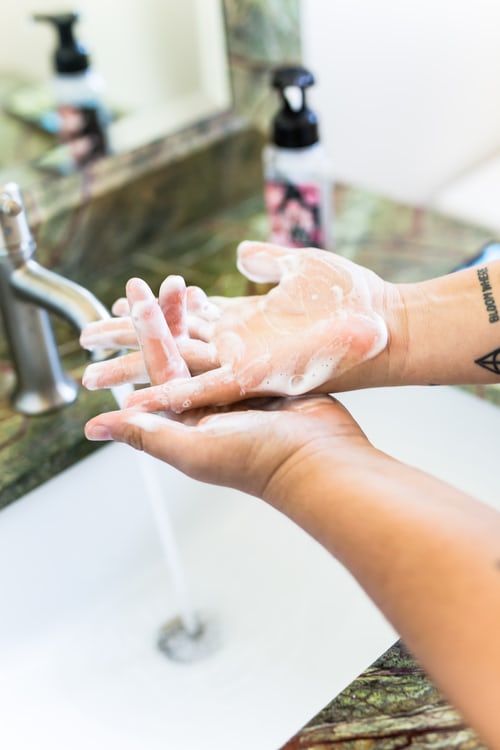Guidelines For Proper Hand-washing

During these times, it’s important to know the correct way to wash your hands. It may seem like such a simple act, but the truth is that when it comes to hand-washing the right way, there are a lot of things people miss. Here are some guidelines of hand-washing that everyone should commit to memory to deal with illness now and in the future.
Timing
As with many other things in life, washing your hands the right way involves perfect timing. As you move throughout the day you touch all sorts of things. Germs hitchhike on your hands and then when you touch your nose, mouth, or eyes, the germs can infect you. A good rule of thumb: Don’t pick up hitchhikers — or at least, pick up as few as possible.
It’s an impossible task to keep your hands free from germs, so that shouldn’t be your goal. The goal should be to wash your hands frequently so that you can limit the viruses and bacteria that can transfer from your hands to your face to make you sick.
When should one wash their hands? Always make sure to wash your hands before you:
- Prepare food
- Eat
- Take medicine
- Give medicine to someone else
- Remove or insert your contact lenses
There are also a plethora of activities, after completing, in which you should wash your hands. These include:
- Prepping food, especially if it was raw meat
- Handling garbage
- Changing a diaper
- Using the restroom
- Shaking hands with someone else
- Blowing your nose, sneezing, or coughing
- Petting an animal or touching anything related to the animal such as leashes or toys
- Handling household or garden chemicals
- Using anything that’s public, such as an ATM touchpad, gas station pump, or doorknob
And it deserves a mention that you should always wash your hands if they’re visibly dirty.
How to Wash Hands
You may think that washing hands is a simple act: Get them wet, slap on some soap, rub them together, and then rinse. Well, washing your hands may seem simple but there are some important principles to keep in mind as you’re doing it, such as:
- Always make sure to wet your hands first
- Apply soap, which can be from a bar or liquid (powder can work too)
- Lather up the soap
- Rub hands vigorously for 20 seconds at a minimum
- Scrub all surfaces of your hands including between your fingers, the back of the hands, the wrists, and even under your fingernails; imagine you’re trying to remove grease
- Rinse well with water
- Dry hands with a clean towel, disposable or otherwise
- Use the towel to cover your hand as you turn off the faucet
Sometimes you can be in a pinch with no soap and water in sight. During those times, hand sanitizer should do the trick. Any hand sanitizer you use should be at least 60 percent alcohol. When you apply it, make sure to:
- Use it generously because you need enough of the product to completely wet your hands
- Rub your hands together, covering all surfaces of the hands mentioned previously, until the sanitizer is dry
You can also use antimicrobial towelettes or wipes, but make sure to find a product with a high percentage of alcohol just as you do for hand sanitizer. Any time your hands are visibly dirty, you are far better off using soap and water.
The good news is that hand-washing is a simple act that can help to keep you and the whole family healthy. Now that you know what to do, you can apply it to your daily life and keep those hands sparkling clean. It’s never been more important!
